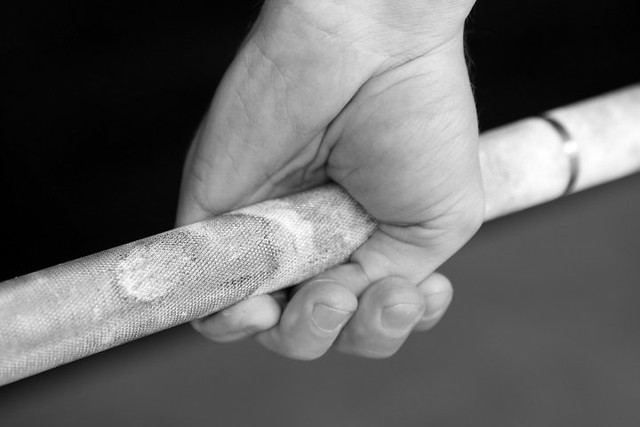Hooked.
Five rounds for time:
Row 500 meters
15 Hang squat snatch (75#/55#)
Post time to comments.
The hook grip.
Our grip is the means by which we transfer the force generated by our muscles to the bar. If our grip fails, the lift fails.
Strength guru Mark Rippetoe has stated that our brain senses when our grip fatigues, and as a result, a self defense mechanism kicks in and will not allow maximum motor neuron activation during the concentric lifting phase. Basically, the bar won’t move off the ground. Our bodies are so smart, it’s like that sense you get when you shake someone’s hand and it’s like shaking a dead fish, limp and lifeless, and slightly creepy, telling you to run the other way. (Maybe that’s me) The hook grip has several advantages and really only one disadvantage (it hurts like hell if you’re not used to it). So here’s how to do it:
From the picture, you can see the thumb is on the opposite side of the bar as the rest of your fingers. Next, tighten the thumb down around the bar and starting with your pointer finger cover your thumb with as many fingers as possible.
Everyone’s hands are little different, but you should be able to get two fingers around the thumb. And finally, you’re gonna smash down hard for max tension.
Using the hook on the Oly lifts is pretty much essential since these lifts are so explosive and so much force is being transfered very quickly through our grip. Holding the bar in this manner is also useful for the deadlift albeit very painful (ain’t gonna lie). The advantage here, over a mixed or alternating (one palm facing front, one palm facing back) is that it’s a more balanced way to bear the load. As with anything in crossfit, this is gonna take a bit of practice and a lot of just dealing with being uncomfortable. Today’s a perfect day to do just that!
















